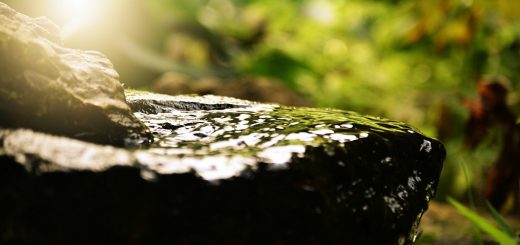Greening the Anatolia College High School Chemistry Labs

Author(s): Anatolia College
Lesson plan summary
Actions taken towards the implementation of greening in the lab curriculum are: introduction of micro-scale chemistry, dilution of the solutions used, removal of hazardous materials and replacement of non-environmentally safe practicals, introduction of microwaves, synthesis of natural polymers, presentation of the twelve green chemistry principles along with practical examples.
| Subject | Green Chemistry |
| Topic | The Greening of Anatolia CollegeHigh School Chemistry Labs as a step towards Greening |
| Age of students | High school students- 14-18 |
| Preparation time | X minutes |
| Teaching time | 100 minutes |
| Online teaching material (links for online material) | Introducing Green Chemistry: The Science of Solutions https://blossoms.mit.edu/videos/lessons/introducing_green_chemistry_science_solutions |
| Offline teaching material | https://www.beyondbenign.org/bbdocs/pdfs/Lactic_Acid_Titration_Extension.pdf “12 Principles of Green Chemistry” from Figure 4.1: (p.30). 12 Principles of Green Chemistry from Green Chemistry: Theory and Practice (1998) by Anastas P and Warner J. By Permission of Oxford University Press.American Chemical Society Green Chemistry InstituteEPA Green ChemistryBeyond Benign Plastics Bioplastics – American Chemical Society https://greenchemistry.yale.edu/sites/default/files/files/Recycling%20PLA.pdf |
Aim of the lesson
By the end of this lesson students will learn about:
- Green activities
- Microscale chemistry
- Dilution of solutions
- Hazardous chemicals
- Environmentally safe practicals
- Chemistry technics
- Stoichiometry
- Microwave use in the labs
- Green polymers
- Green Chemistry examples
- Atom economy
Activities
| Name of activity | Procedure | Time |
| Introduction to Green Chemistry | Start the lesson with introductory questions: What does a chemist do? What are some chemical products? What do you think about when you hear the words “Green Chemistry”? What is environmental science?Students can watch the introductory video … ( MAKE VIDEO ) Students will be introduced to the 12 Principles of Green Chemistry and the 3 RsActivity: Think about what Green Chemistry means to you.Present the 12 principles in your own words.Students will be divided in groups. Each group will be assigned with a green Chemistry principle and will be asked to present it with a skit, a drawing or even a song to their classmates. | 45X min |
| Main activity | 1 Introduction of micro-scale chemistryMicro-scale chemistry has been increasingly adopted throughout the world as a method to deliver practical science in school and to meet the challenge of rising difficulties regarding safety, time, and cost [2, 3, 4 and 5]. The advantages of the introduction of micro-scale, when appropriate, are the following:1. More orderly learning environment (less moving around the lab, no rush for limited apparatus, mostly seated during activities).2. Encouragement of better scientific attitude (attention to details, careful observation, systematic work)3. Safety enhancement, as much smaller quantities of chemicals used and/or produced greatly reduce risks4. Reduction of possible spillage and breakage, thus encouraging hands-on involvement5. Use of smaller quantities of chemicals, thus preventing pollution.6. Time of lab activities is shortened, thus more time is provided for thinking about results and drawing conclusions7. Students enjoy using micro-science equipment, thus they perform better. The micro-scale approach can be adopted in several occasions, either in simple or more complicated experiments. At Anatolia performing the single displacement reactions in “chem-plates wells” instead of test tubes is offered, with the reactant solution kept in “poly-pots,” instead of beakers or flasks. The reactions performed in a chem-plate well are: Mg + HCl, Zn + HCl, Cu + HCl, Zn + CuSO4, Fe + ZnSO4, Ca + H2O. A small piece of the metal reacts to 10 drops of the solution or water and the observations for every reaction are recorded. 2. Dilution of solutionsIn most cases inorganic acids and bases were diluted, so that smaller quantities are consumed. The reactions were rather milder and took a longer time to complete, but the acid or base consumption was minimized (i.e. HCl of 1M or 2M concentrations was reacted instead of a HCl solution of 6M concentration). 3. Removal of hazardous materials and replacement of non-environmentally safe practicals with Green ones.Chemicals which are considered harmful or potentially harmful have been removed [6] and these experiments in which unsafe chemicals were used are replaced. Typical examples are:1. Ammonium dichromate [(NH4)2Cr2O7], the all-time favorite chemical volcano was eliminated, due to toxic by-products produced upon heating. 2. Carbon tetrachloride and chloroform (CCl4 and CHCl3), typical polychlorinated solvents, were eliminated as carcinogens. Petroleum ether can be alternatively used for extraction. 3. Mercury (Hg), produced upon heating of mercury (II) oxide, HgO was also eliminated as highly toxic. 4. Iodine (I2), used in the experiment of sublimation has been replaced by caffeine, as it is a respiratory irritant. However the sublimation of caffeine should be performed very carefully, to avoid caffeine burning [7]. 5. Potassium chlorate (KClO3) decomposed upon heating to produce O2, can cause violent reactions, so it has been replaced by the reaction of hydrogen peroxide (H2O2) in the presence of yeast. It should be noted that many of the reactions replaced (i.e. chemical volcano, HgO decomposition, I2 sublimation, KClO3 thermal decomposition) will be presented on DVD [8], as students love watching them. Extraction using diethyl-ether (C2H5OC2H5), a well known solvent of fatty compounds, which can form explosive peroxides, has been substituted by a green micro-scale solubility and extraction experiment [9]. Solid paprika (oil soluble) and food dyes, green and blue (water soluble), were dissolved and extracted in a mixture of olive oil and water. Teaching stoichiometry has also been changed as instead of the quite common double displacement reaction of Pb (NO3)2 + 2 KI → PbI2 + 2KNO3, with the Pb (NO3)2 considered a potential carcinogen and toxic been replaced. The reaction proposed is that between BaCl2 and H2SO4 or any sulphate salt solution i.e. Na2SO4. The reaction is:BaCl2 +SO42- → BaSO4 + 2Cl- and after the white precipitate BaSO4 is filtered off it can easily dry, due to its microcrystal nature. Another green experiment in stoichiometry is the heating of a mixture of sodium bicarbonate (NaHCO3) and sodium carbonate (Na2CO3) [10]. Sodium bicarbonate is a safe alternative to harsh cleaning products and can be used instead of phosphates, so less toxic effects to the environment will be recorded. Heating this mixture over a Bunsen burner flame to constant mass will allow the recording of change in mass, which is due to the amount of NaHCO3 lost as water and carbon dioxide gases. Thus the percentage composition of the mixture can be deduced. 4. Introduction of Microwaves in the labsThe use of microwave ovens in the high school settings could introduce a substantial saving of time, energy, and cost. Many labs that include heating require set-up of burners or hot plates and time for solutions to heat. Microwaves allow for quick heating, substantial energy and equipment cost savings, and introduction of an element of readiness, that could facilitate the design of future labs. Heating a certain amount of water using both the microwave and the traditional hotplate is performed to demonstrate that potential microwave heating is more effective [10]. Equal amounts of distilled water are heated in a microwave oven and over a hot plate, for about 200 seconds. The temperature is recorded every 10 seconds to determine the temperature rise in both procedures. The energy consumption is also deduced, using the energy usage information provided to determine the greener procedure. 5 Synthesis of a green polymerA green polymer will be synthesized using milk which upon certain chemical treatment turns into glue [11]. However the glue produced should be used immediately, as it can’t be kept for a long while. Hot milk is stirred into vinegar and the curd produced will be broken into small pieces as baking soda is added and mixed thoroughly. Eventually the curd becomes smoother and more “liquid”, producing glue. 6. Presentation of the twelve green chemistry principles and a few selected Green examples. The twelve green chemistry principles were presented, along with a few characteristic examples. For instance, for the atom economy principle the combustion of carbon will yield carbon dioxide and no by-products, while the heating of calcium carbonate also leads to carbon dioxide formation, but solid calcium oxide will be a by- product, requiring concern about its disposal. This leads students to understand that preventing pollution should be the policy of the future instead of trying to eliminate pollution materials. Until a few years ago a chemist would focus on maximizing yield, minimizing the number of steps or synthesizing a completely new chemical. Green chemistry and atom economy set new goals in reaction chemistry: designing reactions in a way that the atoms present in initial materials end up in the products rather than in the waste.Saponification, or soap making, is a traditional reaction (figure 1) and a very good example of the atom economy [12]. Using molecular models or calculating the mass of reactants and the soap (product) and then dividing the mass of the product by the total mass of the reactants and all that multiplied by 100, will give the complete idea of atom economy. where: A = percent atom economyM = mass of desired productT = total mass of all reactants |





